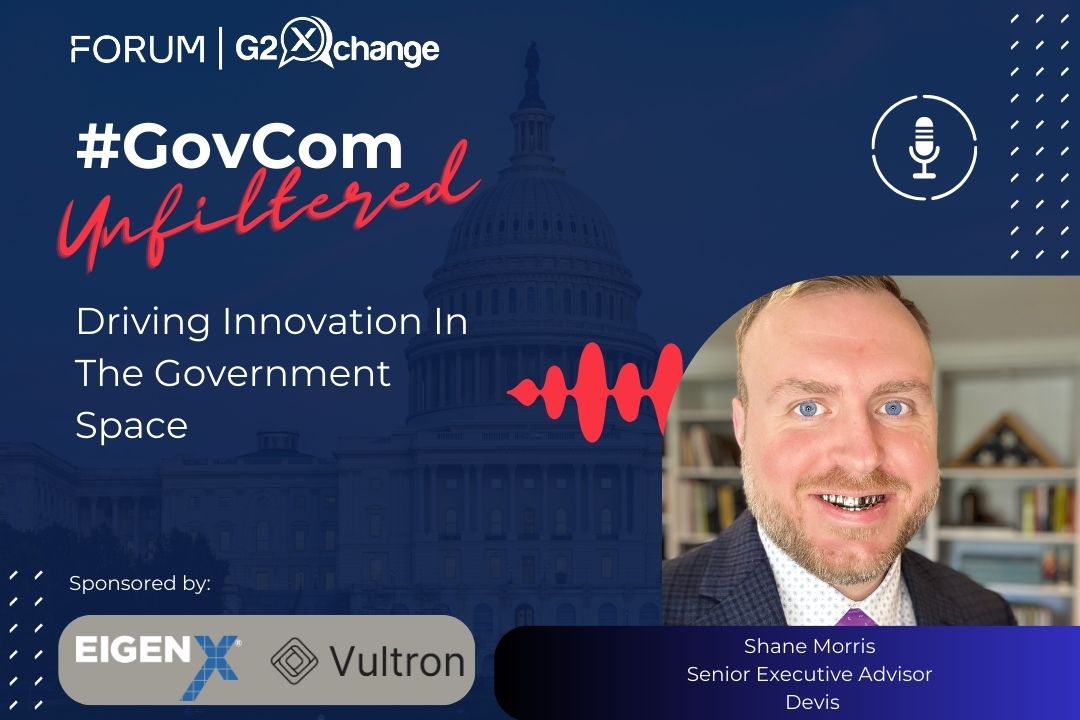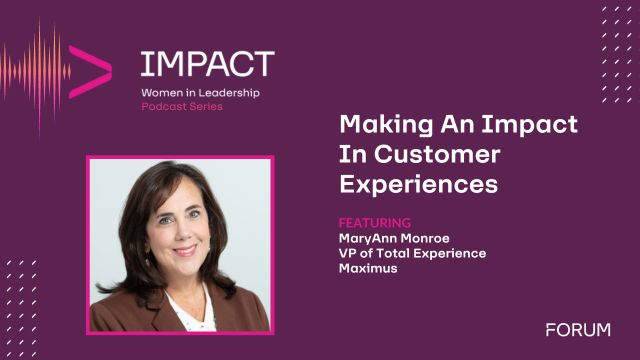Recently, FedHealthIT’s Executive Vice President, Susan Sharer, had the opportunity to sit down with two senior leaders from VA’s Office of Information and Technology: Drew Myklegard, Acting Executive Director for Demand Management, and Daniel McCune, Executive Director for Application Management, about VA.gov, the shift to APIs, challenges in moving forward, and the future.
The Progression of VA.gov
Our goal as we moved forward has been creating one spot for Veterans to engage with all of the services they need from Veterans Affairs, along the way testing and watching to ensure that the engagement we are driving to happens, and that users are satisfied with the experience along the way. When we launched the new VA.gov, we saw that Veteran engagement increased three-fold. Earlier this month we added the ability to check and manage benefits and again, we have seen a tripling of engagement numbers.
When Veterans are accessing services, moving through the VA’s services, there is an expectation of consistency, of responses in a timely manner, delivered efficiently. The feedback we’ve had so far indicates that Veterans are now able to see a lot more and that what they are seeing is consistent across the board.
Our collaborative approach is working to bridge business lines and all of the areas that Veterans will touch. VA has an incredible mission and we are all 100 percent focused on achieving the goal. That collaboration had to start and continues to move forward based on quantitative data that supported the model and trust at least partially rooted in that shared mission.
A Study in Seamless Access for Veterans
There is a lot of transformation going on within Veterans Affairs, and a lot of training as we adjust to new processes and tools but we wanted this all to be seamless for the Veteran. As we adjust and make changes, we have Innovation Fellows who are studying behavior and reaching out to ask about the user experience. We are very focused on the human factor and that means ensuring their satisfaction, it means asking whether the user wants something moved or prefer the way it was. From our perspective, this means spending time ensuring a solution is going to work the way we envision, getting the technology right to ensure it is efficient, seamless and scalable, and then studying the user.
In the case of VA.gov, that included pre-testing the change with a Veterans organization that engaged a lot of their members to test and try and give feedback. They did a great job of helping us verify that first step before we moved forward.
Managing a System of Systems
There was a time information technology was viewed from the perspective of individual projects but we recognize that at VA we are not one system or project but a complex network that requires a lot of integration. Our approach is to look at operating models that are larger than what any one individual project may need to address a system of systems approach.
Part of that approach also involved a shift from building to buying. If we are able to rely on COTS, perhaps with modifications, with a backup last resort to build, we can spend more time, energy and dollars on what the Veteran wants and needs at a micro level.
The API Management Platform
The API management platform we use was driven initially by our Deputy Chief Technology Officer, Alex Loehr. The idea started with the knowledge that we had built APIs for backend systems and that these provided better security, efficiency and speed. And then the question became, why aren’t we using these to power all of our systems? This is part of ensuring that whether Veterans use VA.gov or go to a regional office, they are accessing the same information and get a universal response.
This has been the largest program VA has ever undertaken and understanding that the current workload didn’t stop, that we simply added on top of it, drives home the magnitude. We have 150 interfaces that touch the core system. Part of the early work was looking at whether we needed legacy code on all of the systems. In many cases, we found was to intercept the interface payloads in real time, to split, intelligently reroute, or reformatting using middleware without ever touching the original code. Moving forward these integrations will become easier as APIs become more common.
We launched the API platform Lighthouse in August and in December rolled out the Health API.
The advantage of this system is that it provides better governance of our data and opens up potential to external developers that we can bring in and safely expose to the URL. Following our specifications, the first group of developers has come in and is building against what we have and then, once they’re done, we’ll go through and analyze, looking for next solutions and improvements.
Challenges in Getting From There to Here
Finding data within VA can be hard because it is so dispersed and then getting permission to use and expose that data is another level of challenge. Even though at its core it is safer and more economical, anything new takes time to trust and has to be proven.
In order to get to where we are now, we had to learn how to build in order to develop best practices that would help vendors know how to proceed. At some point we will be able to step back and just let the vendors build knowing we have this infrastructure in place, knowing that it has become part of our DNA to do so.
Another challenge is the skillset, finding a deep enough bench to continue moving forward. We have hundreds of software engineers in our workforce and many will need retraining to move away from VistA and other legacy applications to be able to respond to the new system.
A key function of moving forward is tying everything together, having developers involved in integration, teaching and training staff to leverage the benefits of the new platforms and this stretches across the board from supply chain to finance, to the electronic health record.
Bridging Distance and Agencies
Working with DHA we have an integration team working with both sides and we are learning from them and what they are doing as much as we can, understanding that sometimes what they are doing doesn’t fit.
Having been without a CIO for quite a while we are driven by a strong IT leadership team, by a lot of smart, young, innovative leaders who are thinking about the challenges of IT differently, who are reaching out to engage with business leaders and driven by finding those new solutions.
We have come to the point where our business lines are largely more aligned but we will always be challenged, as a distributed workforce stretching from coast to coast with communicating and staying in synch across the country. As we have been making change, there was an effort to engage our teams across the country that let them know they were part of a team and how they could contribute moving forward. Understanding that we have to scale everything, from communication to technology to platforms, change fatigue can factor in so it’s critical that people understand their future within the Agency and their roles moving forward.
The Future
There is a lot of innovation going on in Government right now and a lot of good things happening. Reinventing Government isn’t just a phrase, it is really happening. This is a unique time to be in the Federal space, a unique time where we are taking best practices from private sector and leveraging that outside skillset. We have never been more open to SaaS, PaaS and other specific and general applications. Driven by a focus on customer service, on ensuring the Veteran experience as they touch VA is as good as they might get in the commercial sector, if not better, there are a lot of really great things going on in Veterans Affairs right now and some great opportunities for those who understand the work.
About Daniel McCune
As the Executive Director for Application Management in the Enterprise Program Management Office, Mr. McCune is responsible for software development, testing, and data management.
Prior to joining EPMO, Mr. McCune spent 20 years leading software development projects – in both private and public sectors. In private industry, Mr. McCune worked for a software development company where he implemente d Agile and led development teams releasing commercial healthcare software. Mr. McCune transitioned to VA in 2010 when he joined the Financial Services Center (FSC). During his 8-year tenure at FSC, Mr. McCune served as a thought leader in IT Program Management as well as IT innovation as he worked to introduce new methodologies, tools and practices including SOA, Agile, Portfolio/Program Management, Centers of Excellence, and Digital Centers. Using principles of Lean, Agile, and Speed to Market, Mr. McCune increased project velocity and capacity while, at the same time, reducing cost. He played many roles including Development Manager, Project Manager, Division Chief, and Director of PMO. While at the FSC, Mr. McCune launched three new organizations: Lean Six Sigma Process Improvement Division, A Software Development Division, and PMO as a service. Mr. McCune’s certifications include PMP, SOA Architecture, and Certified Scrum Master.
About Drew Myklegard
As the Acting Executive Director, Demand Management, Enterprise Program Management Office, Office of Information and Technology Mr. Myklegard directs VA’s Project Special Forces assisting projects with agile implementation, OIT policy, assisting projects that are experiencing challenges with delivery or performance and enabling developers to build mobile and web apps utilizing standards-based Software Development Kits (SDKs) and Application Programming Interfaces (APIs) designed to serve VA’s Veterans.
Mr. Myklegard joined the VA in October 2013 to lead Enterprise Solutions for VA Center for Innovation (VACI). In that role, Mr. Myklegard oversaw the development of several web and mobile applications including an on-demand telemedicine app (CareNow), an enterprise wide correspondence management app (VIEWS), and a quality control app Work and Time Reporting System (WATRS) to measure speed and consistency of the claims process.
Prior to his appointment, Mr. Myklegard was a consultant with Booz Allen’s Capability and Strategic Technology Innovation Center of Excellence, where he focused on healthcare technology architecture.
Mr. Myklegard is a currently serving in the US Army Reserves as a Military Intelligence Officer.












